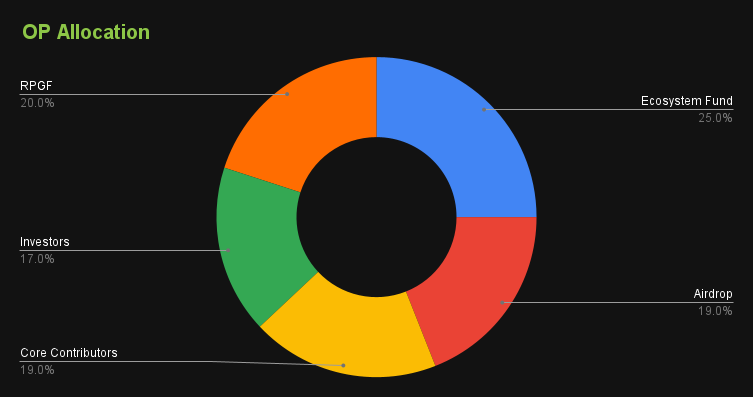Optimism op
Summary
Optimism is a layer-2 solution on Ethereum, the most widely used general-purpose blockchain. (“Layer 2” refers to an additional network that inherits the security of the layer-1 blockchain while providing additional throughput and significantly cheaper transactions.) Think of Optimism as an additional space used to create, transact and store information backed by Ethereum.
The problem
Ethereum is relatively slow. It can only do a certain amount of transactions. When lots of people want to use it, transaction fees often soar.
Optimism solves this by providing an environment where users can execute transactions, swap coins or buy an NFT without the high cost. All while still being secured by Ethereum.
Optimism aims to help users access Ethereum’s vast ecosystem of decentralised applications (dApps) but with cheaper transactions and a smoother experience.
How does it work?
Optimism works by using optimistic rollups. Rollups are a technology that helps scale blockchains. They compile many transactions, turn them into one piece, and then submit that back to the Ethereum mainnet.
- It’s all about batching transactions from Optimism back to Ethereum.
The idea is simple, if you can move most of the execution and transactions to these networks like Optimism, it frees up more space on Ethereum (as you only need to record 1 transaction instead of thousands).
Without getting too technical, there are 2 main types of rollups; optimistic and zero-knowledge.
- Optimism uses optimistic rollups, which use economic incentives (i.e. fraud proofs) to ensure no one is cheating. That is, they assume (optimistically) all transactions are honest, with a waiting period for anyone to challenge any bad transactions.
- In contrast, other competitors use zk-rollups, which rely on math and cryptography.
Governance
Optimism operates with a unique dual governance model with 2 houses:
- Token House voting on technical decisions.
- Citizens’ House votes on public goods funding decisions that encourage positive outcomes.
Where to now?
Optimism is in the process of upgrading its core infrastructure. The developers expect to release a significant upgrade in Q1 2023 called Bedrock. Simply put, it’s a redesign of Optimism and aims to be the foundation for the protocol (i.e. the ‘bedrock’). It’s currently being deployed in testnet.
OP Token Utility
Optimism’s native token is OP. It has a total capped supply of 4.3 billion, with only 5% in circulation at the time of writing. OP has an inflation rate of roughly 2%.
A large portion (~19%) of the total supply is for airdrops. Only roughly a quarter of this airdrop allocation has been used to date.
So far, OP has the following limited uses:
- Governance: OP holders form a body to vote on certain governance matters.
- Rewards and ecosystem funding: OP is airdropped to users and protocols that support the ecosystem. OP is also distributed through the OP Governance Fund to future projects building on Optimism or to public goods.
Looking at what other Ethereum scaling solutions are building, there may be extended utility for OP if Optimism eventually builds its own network. (This is pure speculation for the moment.)
Collective Shift Analysis
To see Collective Shift’s analysis, sign up for our membership!
